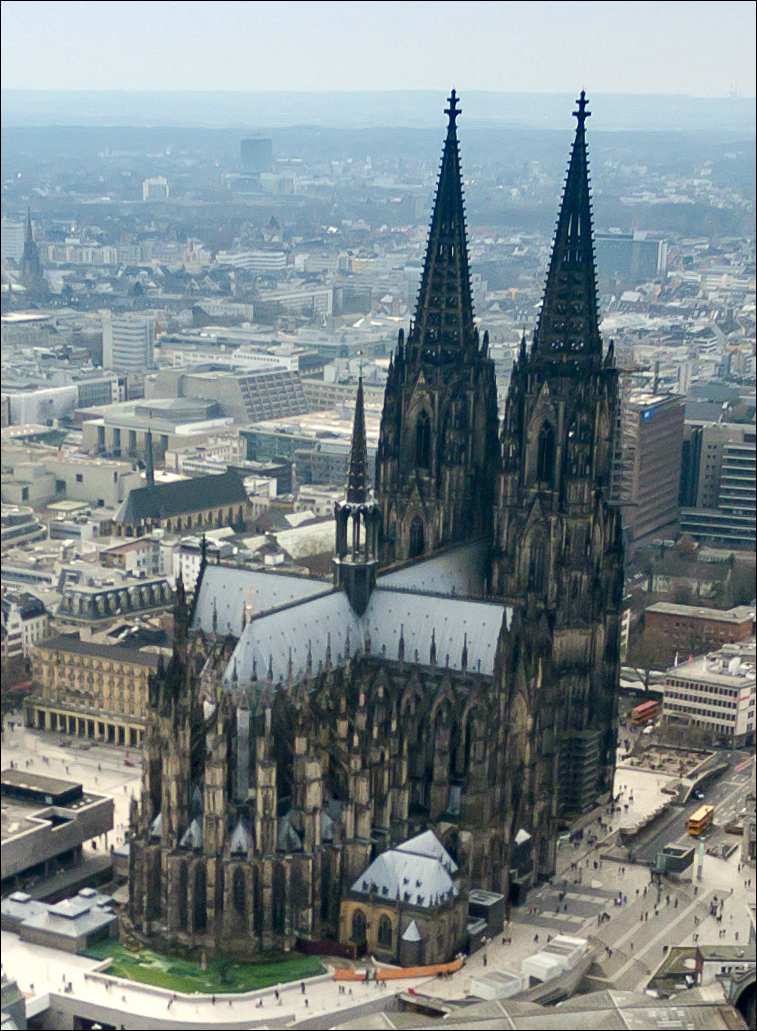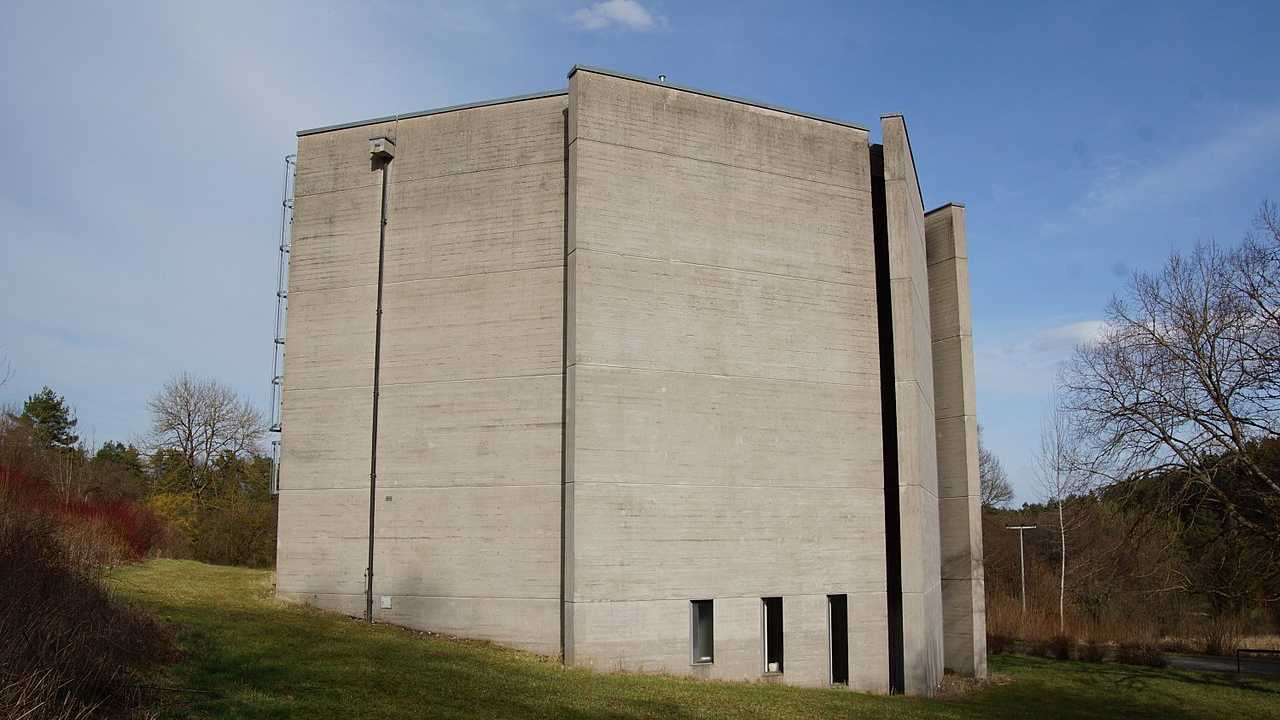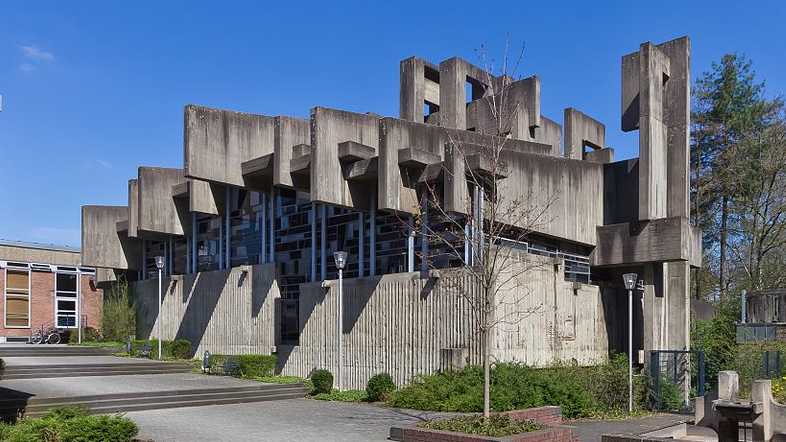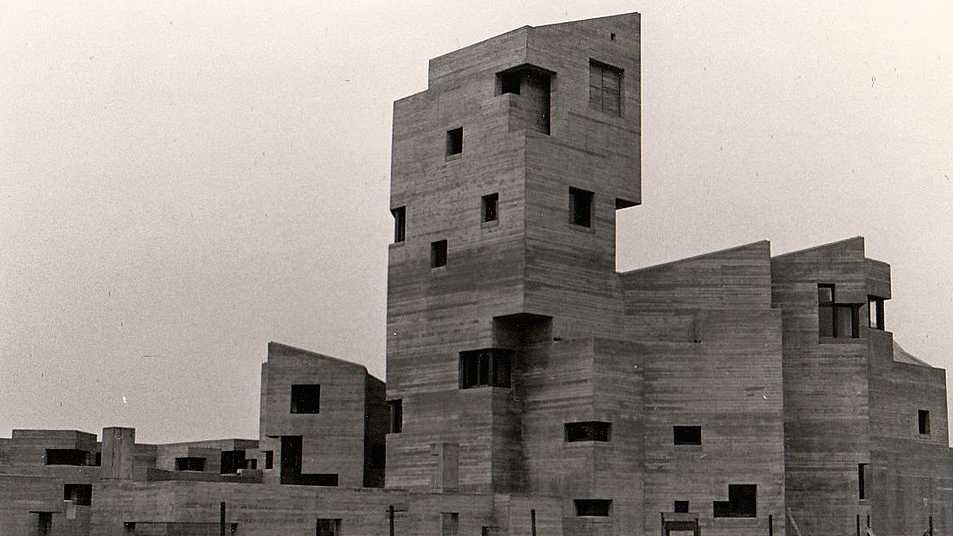Germany has been in the news quite a lot lately – questions of oil pipelines and taking sides in the Ukrainian war and such – but don’t judge Germany by its current politics or economics. Judge it by its churches.
The first thing to know is that Germany’s churches are little picture books of its vast and amazing history. In the common western perception, Germany is Protestant, the land of Lutheranism, evangelicalism, and the Protestant work ethic. More recently, it has become the land of awful and heretical Catholic synods. But it didn’t used to be that way.
A Solid Catholic History
If you had a good sense of history, you would probably know that the German people formed themselves into one of the preeminent Catholic cultures in the world throughout most of existence as a people. (Germany became a single nation only in 1870 after a thousand years as a confederation of small kingdoms, principalities, and duchies, but I will refer to it generically as Germany.)
After the fall of Rome (476 AD), Germany became the land of incredible pagan conversions, magnificent saints, and the greatest monasteries anywhere in the world.
Many of the barbarian tribes that filled the vacuum of a crumbled Roman Empire – the Saxons, Goths, Ostrogoths, Thuringians, Alemans, and others – are the direct ancestors of modern Germans. They all converted to Christianity during the Dark Ages (about 400-900 AD). All of them.
From there, German Catholicism became a sort of a Catholic hall of fame for saints, religious orders, missionaries, Catholic culture, and spirituality. Here are a few examples of what I mean:
- Above all, the great missionary, St. Boniface (675-754 AD), who is considered the Apostle and evangelizer of Germany (don’t tell the Germans he was Anglo-Saxon);

- Great leaders like Charlemagne (742-814), who established the Holy Roman Empire that lasted for a thousand years; his was a kind of hybrid Franco-Germanic culture at the time, which separated and formed the distinct French, German, and Italian nations later in history;
- Fierce German Crusaders (1100-1300) founded the Knights Templar, the Knights of St. John, and the Teutonic Knights;
- Brilliant monks, religious, mystics, and founders:
- Bruno (1030-1101), founder of the Carthusian Order
- Norbert (1075-1134), bishop and founder of the Premonstratensian Order
- Albert the Great (1200-1280), teacher of St. Thomas Aquinas and Doctor of the Church
- Gertrude the Great (1256-1302), mystic and theologian
- The Rhineland mystics (Meister Eckhardt, John Tauler, Hildegard of Bingen, et al.)
And did you know that there have also been eight German popes throughout history, up to and including Joseph Ratzinger, Benedict XVI?
This is to say nothing of the great Germanic movers and shakers of the Renaissance like St. Peter Canisius (1521-1597), the Dutch Jesuit who is credited with saving the faith in Catholic Germany, Austria, Bohemia, Moravia, and Switzerland at the time of the Protestant rebellion.
I could go on, but I’ll have to stop there because I want to draw a clear line that separates a traditional Catholic Germany up to the Renaissance from what followed.
Traditional Catholicism in Germany
In a previous Sacred Windows newsletter, I featured the magnificent library in the Benedictine Monastery of Admont, Austria. An institution like that is one of a huge network of Catholic monasteries in Germanic countries that once existed before the destructive forces unleashed by Martin Luther and the secular takeovers that came in his wake.
 The number of monasteries established in Charlemagne’s kingdom in the Middle Ages, for example, was more than 150. The number of specifically Germanic monasteries during the time of the Holy Roman Empire (~800-1800 AD) was well over 100. If you have a moment to look at these lists, you’ll see that the religious culture of Germany as witnessed in its monasteries was truly astonishing!
The number of monasteries established in Charlemagne’s kingdom in the Middle Ages, for example, was more than 150. The number of specifically Germanic monasteries during the time of the Holy Roman Empire (~800-1800 AD) was well over 100. If you have a moment to look at these lists, you’ll see that the religious culture of Germany as witnessed in its monasteries was truly astonishing!
[In that latter list, you will notice a middle column with the labels “Sec.” and “Med.” which are euphemisms for secularization by hostile governments, thefts by the Lutherans, or simply destruction and dissolution. It is truly shocking to see the demolition of Catholic monastic life that has occurred since the Protestant rebellion. To be clear, most of these ancient institutions still exist today, but a good portion of them are no longer centers of Catholic life and culture.]
Germany’s Glory and the Magi
Of all the churches that Germany can claim as its heritage, though, none is more glorious than Cologne Cathedral in the state of Westphalia in western Germany (which is still Catholic). It was begun in the late Middle Ages (1248 AD) to house the relics of the Three Kings – which were brought back from the Crusades!
It’s hard to know whether the relics are authentic or not, but we do know that it took over six hundred years to finish building the cathedral. That has to be a historical record for a building project, but it does emphasize the fact that such massive religious monuments are built by communities of faith over time, not just individual leaders



[Images: The shrine and reliquary that contains the skulls of the three Magi.]
Construction on the cathedral was suspended for over 300 years during and after the Protestant Reformation, but was begun again in the 1800s. The spire of the North tower was set in place in 1880. I once climbed that tower, and as I recall, there were over 800 steps to the top!
During the Second World War the cathedral was one of the few buildings to survive the Allied bombings (mostly) intact. It was damaged only on one corner, but the local populace saw its survival as the Hand of God protecting the holy place.
Gothic Beauty
Cologne cathedral is probably the quintessential example of Gothic architecture in the Germanic world. The very word “gothic” takes its name from the barbarian Germanic tribes, the Goths, of course, but “gothic” was a term used by Protestants to slander this the Catholic architectural style as “uncultured” or “barbaric”.
Yet, it’s hard to see how anyone could have imagined the Gothic style to be anything but glorious. Obviously the original slander didn’t stick.
The soaring and majestic style itself needs very little description, except to note that the towers are 516 ft. high and the cathedral covers 26,500 sq. ft. of space. (Make sure to look at the size of the people on the ground compared to the overall size of the structure.) There is no other way to describe it other than breathtaking.
Here are a few pictures of this Catholic gem.
The Other Germany
Then there’s the other Germany. Catholicism in Germany has fallen on hard times in the past five hundred years, not only because of Protestantism but also because of the secular culture and governments that followed as a natural consequence of it.
By way of contrast, I have placed the sublime Medieval architecture with its prayerful pointed arches and spires reaching to heaven ahead of a few pictures of the absurd post-Vatican II churches whose ugliness must be seen to be believed. The style has come to be known as Brutalist, a name that also needs no explanation, as you can see in these few examples.
Although it might not be obvious, there is a mixture of Catholic and Protestant churches among these pictures, but that’s just a way of saying that any significant differences in architectural styles of modern Protestantism and modern Catholicism have almost been completely wiped out by modernity.
As far as I am aware, all of these churches are currently functioning parishes. Although I haven’t included pictures of their interiors, I can assure you the brutalism of their insides is much the same as the ugliness of their outsides.
There are many more to show, but I will spare you the pain!
Sacred Windows of Worship
But that brings up a question we constantly ponder in this newsletter. It is the question of our ability to perceive the divine as it imbues the tangible elements of this world:
If a church is a sacred window of God’s grace and beauty, which type of church would you say is more conducive to divine worship?
This?

Or this?

The question answers itself, doesn’t it? It also reminds us that any authentic expression of Catholic culture passes the test of beauty, truth, and goodness every time.
———-
[Note: This article is a reproduction of the Sacred Windows Email Newsletter of 7/24/22, so it does not end with the regular Soul Work section. Please visit our Newsletter Archives.]



















Leave A Comment